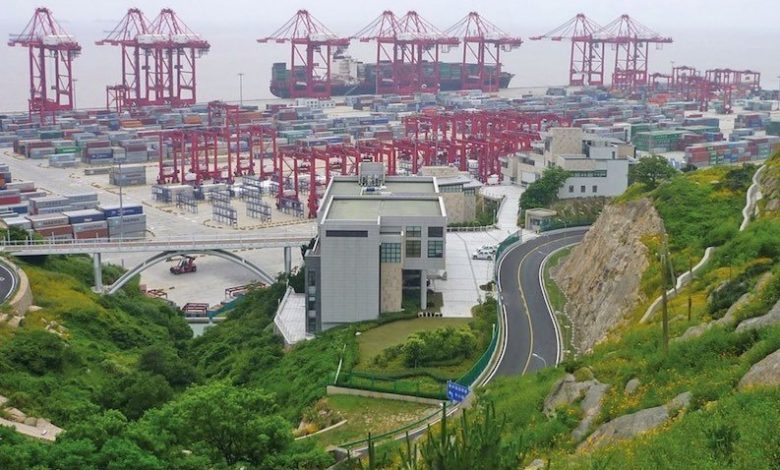Shanghai looks beyond city limits for new terminals

Shanghai: On the face of it Shanghai port looks to be thriving. Statistics don’t lie – placing China’s financial metropolis at the top of the class when it comes to containers and in the top two for overall cargo numbers. However, future growth may well be stymied by geography.
Shanghai retained its box crown last year recording a container throughput of 35.2m teu while its overall cargo throughput hit 754m tons. To put that in perspective, a decade before Shanghai’s box throughput stood at 14.6m teu.
In December, construction started on what local authorities claim will be the world’s most advanced automated terminal, the phase four project at Yangshan Deepwater Port.
Shanghai International Port Group (SIPG) says the city’s annual box throughput capacity will hit 40m teu once the new RMB13.9bn terminal is completed in 2017.
However, behind the glorious statistics, Shanghai port is also facing a series of concerns brought about by the fast development of the port.
“One of Shanghai port’s shortages is a lack of deep navigation channels for large vessels to call directly,” said Liu Xunliang, a director from the Shanghai Transport Authority.
Liu said it’s difficult for Shanghai port to copy Hong Kong port’s highly efficient water to water transit capabilities.
“Yangshan port is isolated from the land, the inland river vessels are unable to transit cargo to ocean vessels on water due to the harsh local water conditions, thus the containers have to be transit at Waigaoqiao port before being shipped to Yangshan port, which adds $200 extra cost per container,” he explained.
“The river vessels are also occupying berths at Waigaoqiao port, which has affected the ocean shipping operation at the port. The berths at the port are reaching saturation,” Liu warned.
The congestion at the port has also led to traffic congestion as there is no railway connection to the pair of Yangshan islands. Fully 70% of the containers at Yangshan port have to be shipped out of the port by trucks which creates serious traffic jams near the port area.
With further port expansion inevitable authorities are now studing possible intermodal solutions.
“After the completion of the phase four project of Yangshan port, there will be very few available shorelines in the Shanghai area for port expansion,” reckoned Zhao Nan, director at the Shanghai International Shipping Research Center.
“In this situation, Shanghai port has to expand to other neighbouring regions like Jiangsu or Zhejiang,” Zhao said.
Technically the port already has done this – Yangshan is actually in Zhejiang.
The port authority has considered Hengsha Island near Shanghai for expansion, however, the plan was opposed by other government departments due to environmental concerns. The authority also considered Da Yang Shan Island near Zhoushan, but according to Zhao, it would be difficult to coordinate with Zhejiang province as the development of Zhoushan Archipelago New Area has already been listed as a national strategy.
In January, SIPG signed a strategic agreement with the Luzhou government in Sichuan to develop Luzhou port on the Yangtze River. Currently SIPG has formed nine joint ventures with nine ports along China’s longest river.
Taicang port in Jiangsu has become an important part of the Shanghai International Shipping Center. It has handled lots of transit cargo from Yangtze River ports for SIPG and has greatly released the burden of Waigaoqiao port, which can focus more on large ocean vessels.
“It is our long term strategy to expand our network to the Yangtze River,” said Chen Xuyuan, president of SIPG.
Shanghai Pilot Free Trade Zone (FTZ), a test field for China to promote and reform its open economy, is also looking to expand. The local government announced at the end of December that the area of Shanghai’s FTZ will be expanded from the current 28.78 sq km to 120.72 sq km.
Fu Weizhong, a senior executive at Shanghai CapEx, a company that runs a forward container-booking platform in the FTZ, said: “Developing high-end shipping services is an essential thing for Shanghai to become a real international shipping centre. Now Shanghai is right on the track.”
This article appears in the Spring 2015 issue of SinoShip Magazine, which can be read online here.
